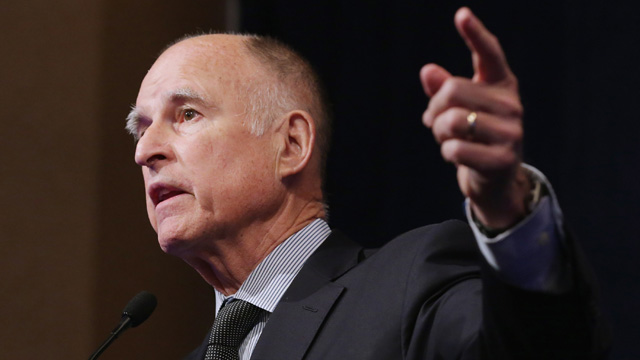One social safety-net program does see a major boost in Brown’s budget. He’s proposing a $1.2 billion increase for the state’s Medi-Cal health care program, compared with January. The money is needed, he said, because as the health care program expands alongside the federal Affordable Care Act, far more people are signing up for coverage than the state estimated. Brown said more than 11 million people will be enrolled in Medi-Cal this year.
“Thirty percent of the people of California are now getting health coverage under our Medi-Cal program," Brown said. "That is a huge social commitment on the part of the taxpayers of California.”
While the federal government is picking up the tab for newly eligible Medi-Cal recipients, the state has to pay half the cost for new enrollees who would have qualified under the old guidelines. So far this year, 300,000 more people have signed up than state officials initially counted on.
So when labor, health access groups and fellow Democrats ask Brown why he isn’t more committed to restoring social services programs for the poor, this is what he points to.
“This is the social program. When you say we’ve got to help the least among us, this is what this program …. This is not going to the middle class. It’s not going to the rich. It’s going to those who are struggling the most,” he said.
But Brown dismisses the idea of restoring one recession-era cut that doctors say would go a long way toward improving the growing health care system. In 2011, lawmakers cut Medi-Cal reimbursement rates for doctors by 10 percent. Those cuts went into effect earlier this year. Richard Thorp, the president of the California Medical Association, says many providers may stop seeing Medi-Cal-insured patients.
“There’s overhead costs and employee costs, and just running the business costs,” Thorp said. “So when you’re getting paid significantly less than it costs to actually keep your business open, there’s a certain amount of that where you can’t just continue to do that.”
A Plan for Pensions
While Brown has made paying off debt a top priority throughout his term, he had avoided dealing with a looming $75 billion hole in the state’s teacher retirement fund. Brown finally unveiled a specific plan Tuesday. He wants to pump $450 million into the fund this year and keep increasing that total down the line. Republican Senate leader Bob Huff welcomed the news.
“We’ve got $340 billion in unfunded liabilities. CalSTRS is particularly upside down. So having a plan that recognizes that and addresses that is very important,” Huff said.
Brown’s proposal commits an additional $73 million in general fund money to CalSTRS (California State Teachers' Retirement System) this year. It would increase contributions from teachers and school districts, too. Teachers’ contributions would eventually grow to 10.25 percent of their pay, while school districts would kick in a bit less than 20 percent of their payroll totals. But pensions are a contentious political issue — especially in an era where they’re all but extinct in the private sector. If the governor’s plan moves forward, it will likely be subject to rounds and rounds of negotiations.
What do Democrats think? The majority party’s leaders were unusually mum after Brown made his announcement. Assembly Speaker Toni Atkins (D-San Diego) issued a brief statement calling Brown’s proposal a “solid starting point,” but made it clear she’d like to see funding restored for programs expanding education and fighting poverty.
Senate Democratic leaders are waiting until Wednesday to give their response.
